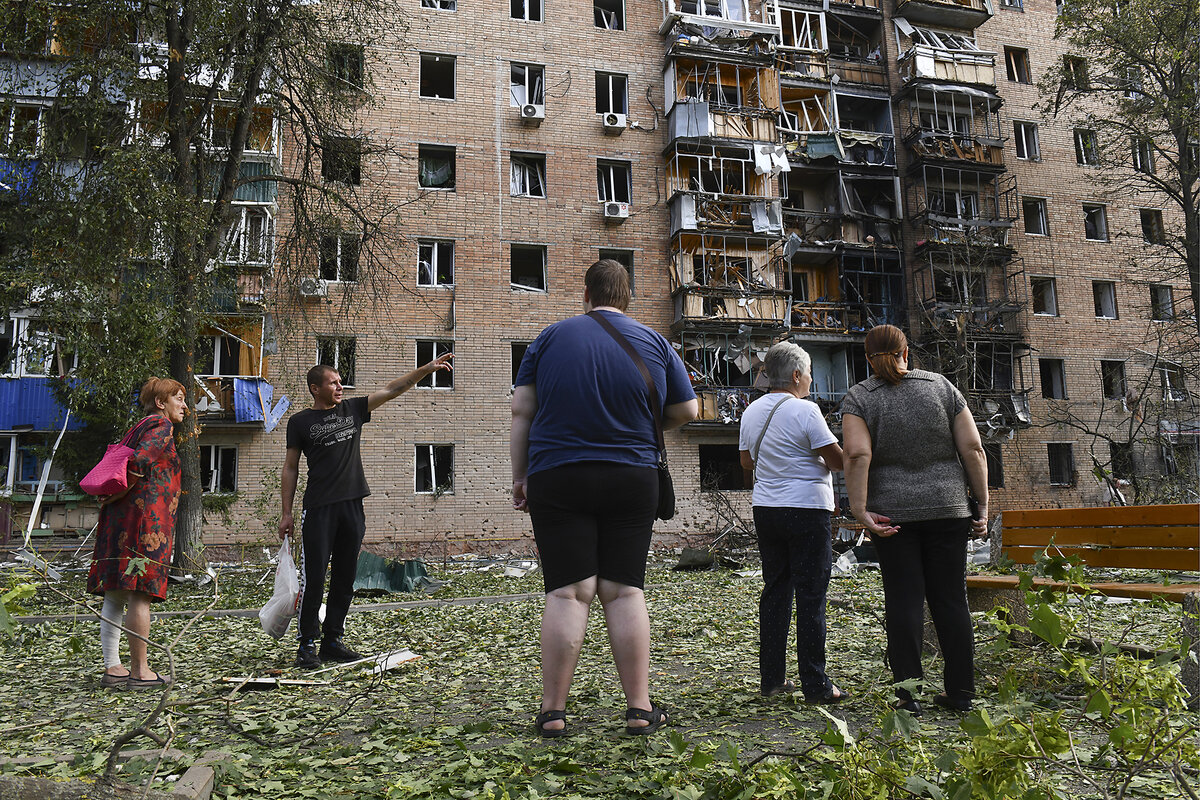How far will Ukraine’s allies let it go against Russia?
Loading...
| London
Nine hundred days after launching his unprovoked war to swallow up neighboring Ukraine, Russian President Vladimir Putin has received a rude awakening: a surprise cross-border attack by Ukrainian forces, which quickly seized control of some 400 square miles inside southern Russia.
Yet Mr. Putin wasn’t the only one caught off guard.
So were U.S. President Joe Biden and Kyiv’s main European NATO allies.
Why We Wrote This
A story focused onWill Ukraine’s surprise advance into Russian territory convince its allies to lift their restrictions on how their military aid can be used? And could that turn the tide of the war?
They now face a potentially critical choice, which they have been deliberately dodging since the Russian invasion: Should they give Ukraine the tools it would need not merely to survive Russia’s onslaught, but to turn the tide of the war against the Kremlin?
So far, they have not fully put their weapons where their words are. That is because of an overriding concern, especially in Washington, that a cornered Mr. Putin might dramatically escalate, threatening other neighbors and bringing NATO directly into the fray.
That concern remains.
But recent changes in the direction of the war have brought a new urgency to the question of how far to beef up support for Kyiv’s forces.
The immediate issue is not new weapons deliveries, even though Ukraine has been frustrated with the on-and-off pace of providing advanced missiles, F-16 fighter jets, and air defense systems.
It is whether to loosen allied restrictions on the Ukrainians’ use of equipment they have already received, especially long-range British and U.S. missiles capable of hitting supply routes, arms depots, and troops far behind the Russian front lines.
They could be particularly effective now if they were deployed from the areas the Ukrainians have captured inside Russia – potentially destroying the bases from which the Russians have been launching missile, drone, and glide bomb attacks on villages, towns, and cities across Ukraine.
Allied hopes of a major spring offensive this year against Russian troops occupying one-fifth of Ukrainian territory foundered, largely because of dense Russian minefields along the nearly 600-mile battlefront.
In recent months, Russia has sent in tens of thousands more troops. Amid relentless air attacks, they have managed to wear down Ukrainian defenses and slowly but surely push forward.
Neither side has seemed likely to achieve a major breakthrough. But the advantage was increasingly, unmistakably, with the Russians.
Mr. Biden hopes that the Ukrainians’ surprise attack on Russia’s Kursk region will have swung the momentum in their favor, at least for now. “It’s creating a real dilemma for Putin,” he told reporters this week.
U.S. and European defense officials have noted the assault’s use of what Western planners call “combined force” warfare – the seamless integration of air defenses, electronic warfare, armor, and ground troops that they had hoped would bring success in the spring offensive.
The attack also appears to have relied on a gradual easing of at least one of the restrictions that the allies had placed on the use of their military aid. The Ukrainian incursion force has been using American and German armored vehicles outside Ukrainian borders, with no sign that Washington or Berlin has raised objections.
Still, there has not yet been similar flexibility on using the weapons that Ukraine insists could most dramatically alter the balance: Britain’s Storm Shadow missiles, with a range of some 150 miles, and even more powerful American ATACM missiles. London and Washington are still forbidding their use against targets inside Russia.
In announcing further Ukrainian advances this week, President Volodymyr Zelenskyy emphasized the potential importance of removing that constraint. “There are things you cannot do with drones alone,” he said. “For that, another weapon is needed: a missile.”
Not even the most optimistic of Ukraine’s supporters are suggesting there is any near-term prospect of being able to force Mr. Putin out of Ukraine.
The hope, instead, is to make him peel troops away from their positions in Ukraine to deal with the first foreign military advance onto Russian soil since World War II.
For the United States and its allies, two considerations will now likely determine whether they green-light the use of their missiles.
The first is the familiar concern not to push Mr. Putin too far.
That may weigh less heavily now. The Ukrainian attack is the most spectacular breach yet of Russian “red lines,” which the Kremlin has periodically hinted could prompt it to escalate, possibly to use of a tactical nuclear weapon. So far, Russia has not acted on such threats.
The other consideration goes beyond immediate battlefield implications, focusing on the diplomatic endgame that all the combatants, even the Ukrainians, seem increasingly to accept must come at some point.
By demonstrating their ability to seize Russian territory, the Ukrainians will have strengthened their hand in any such bargaining, even if Mr. Putin’s forces drive the Ukrainians back.
Kyiv’s allies could strengthen Ukraine’s position even further by allowing the use of long-range missiles against Crimea, which Mr. Putin seized and unilaterally annexed from Ukraine in 2014.
Whether Washington will indeed change course is likely to become clear only in the weeks ahead. For now, President Biden is keeping his cards close to his chest.
“We’ve been in direct contact, constant contact, with the Ukrainians,” he told reporters this week. “That’s all I’m going to say about it while it’s active.”







